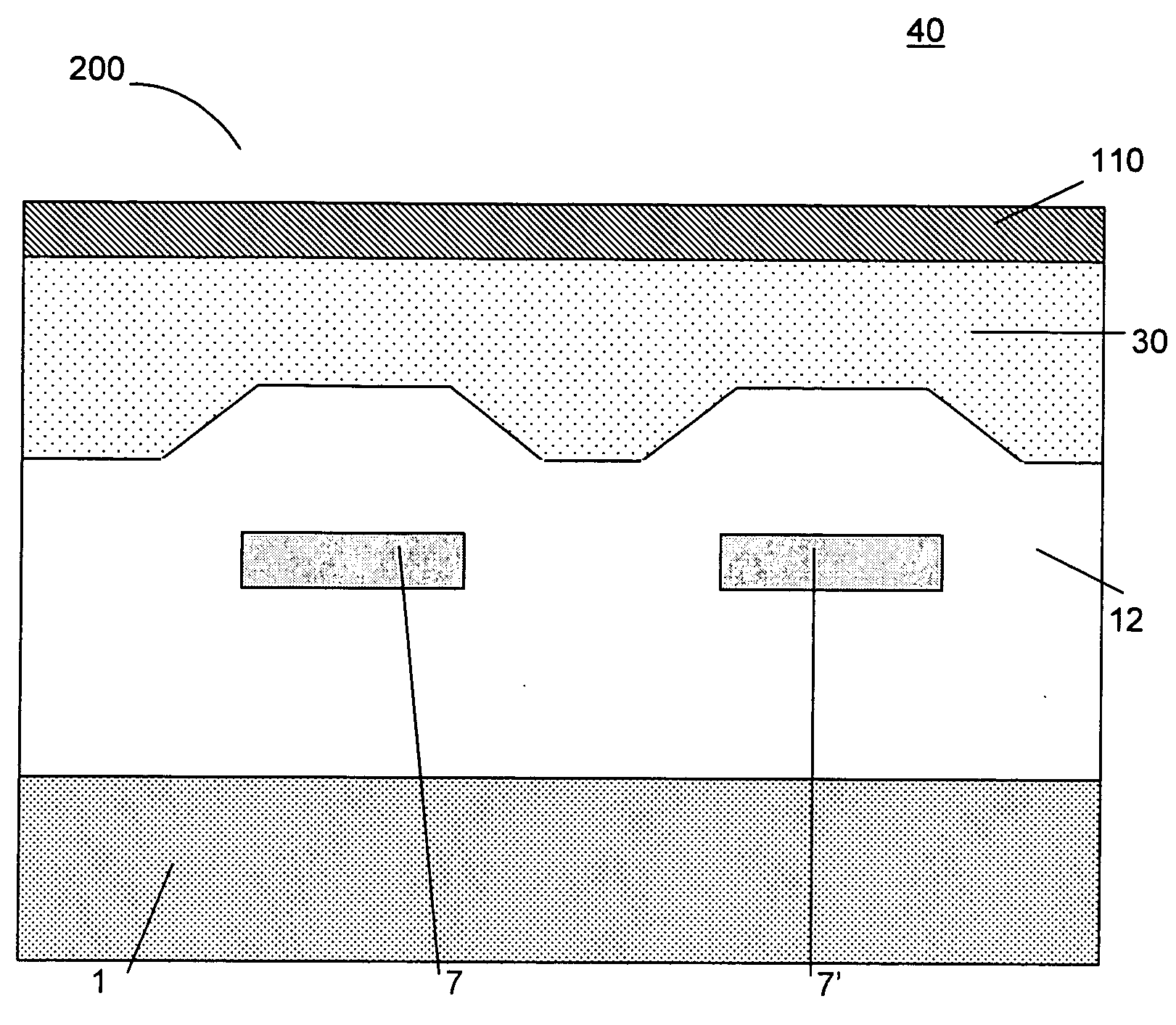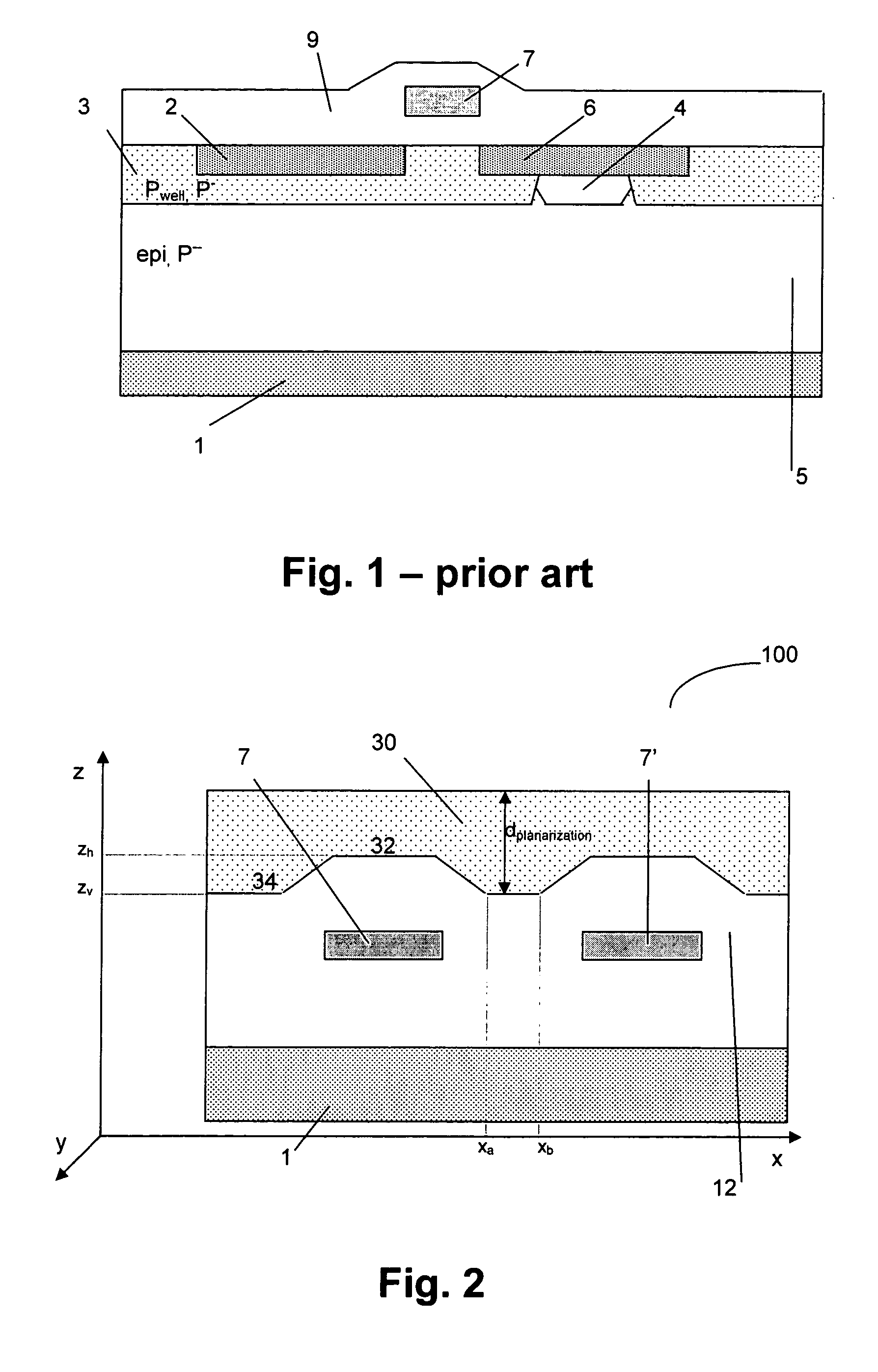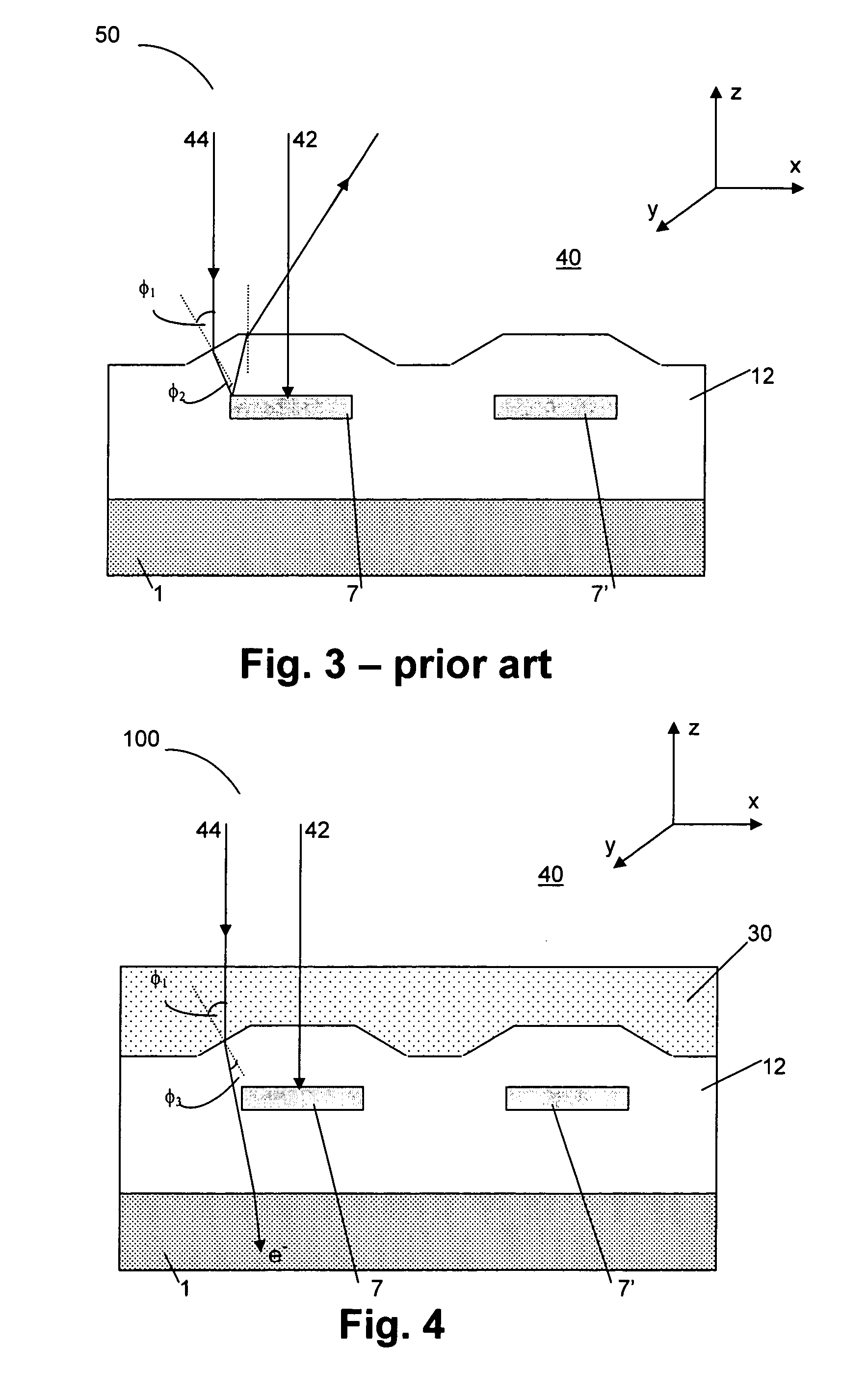Planarization of an image detector device for improved spectral response
a detector device and image technology, applied in the direction of diodes, solid-state devices, electrical devices, etc., can solve the problems of reducing the quantum efficiency of the sensor, no reason to perform this additional step of planarization, and complicated production process, so as to improve the spectral response and quantum efficiency of the detector devi
- Summary
- Abstract
- Description
- Claims
- Application Information
AI Technical Summary
Benefits of technology
Problems solved by technology
Method used
Image
Examples
Embodiment Construction
[0026] The present invention will be described with respect to particular embodiments and with reference to certain drawings but the invention is not limited thereto but only by the claims. The drawings described are only schematic and are non-limiting. In the drawings, the size of some of the elements may be exaggerated and not drawn on scale for illustrative purposes. Where the term “comprising” is used in the present description and claims, it does not exclude other elements or steps.
[0027] The present invention relates to a monochrome image sensor. The term “monochrome” in “monochrome image sensor” is used to determine that the image sensor comprises no color filters (black / white image sensor), or in other words that during fabrication of the image sensor, no color filters are deposited on top of the MOS-based pixel. Therefore, according to the prior art, previously no additional planarization layer was applied on top of the pixel in these monochrome image sensor devices as the...
PUM
 Login to View More
Login to View More Abstract
Description
Claims
Application Information
 Login to View More
Login to View More - R&D
- Intellectual Property
- Life Sciences
- Materials
- Tech Scout
- Unparalleled Data Quality
- Higher Quality Content
- 60% Fewer Hallucinations
Browse by: Latest US Patents, China's latest patents, Technical Efficacy Thesaurus, Application Domain, Technology Topic, Popular Technical Reports.
© 2025 PatSnap. All rights reserved.Legal|Privacy policy|Modern Slavery Act Transparency Statement|Sitemap|About US| Contact US: help@patsnap.com



